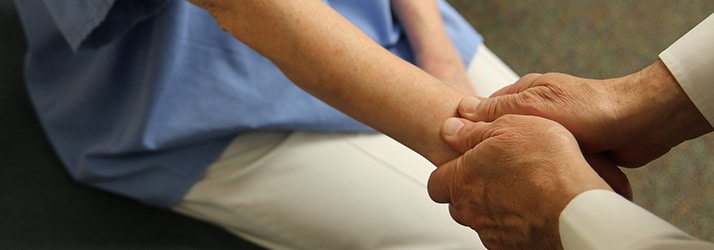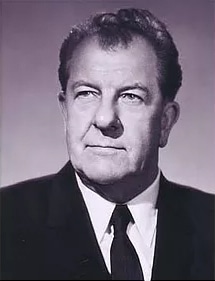The Gonstead Method in Waterloo

Dr. Clarence Gonstead redefined the nature of his profession and built one of the world’s largest chiropractic clinics in small-town Wisconsin. He continues to be one of the most influential figures in the history of chiropractic and the Gonstead System lives as a shining example of the best that chiropractic has to offer.
Gonstead was born on July 23, 1898, in Willow Lake, South Dakota. In his early years, his family relocated to a dairy farm in Primrose, Wisconsin. Gonstead grew up learning how to repair tractors and automobiles, an interest which foreshadowed his later accomplishments in applying mechanical principles to the correction of the human spine. At the age of 19, Gonstead contracted a crippling case of rheumatoid arthritis that left him bedridden for weeks. His aunt sought the help of her chiropractor, Dr. J.B. Olson, and after a course of adjustments, he could walk again.

Dr. Clarence Gonstead, D.C.
This was a life-changing experience for Gonstead; he enrolled in Palmer College of Chiropractic and graduated in 1923. During that time he worked as an automotive engineer; it cannot be understated how significant this mechanical experience was in influencing him to rethink prevailing ideas about the mechanism of subluxations (misalignment of the spine causing nerve interference in the body). He introduced the Level Disc Theory that subluxation begins at the disc where the inflammatory response from damaged tissue creates “nerve pressure” resulting in the neurological complications associated with subluxation.
The assertion that the genesis of subluxation arose from disc involvement was indeed a revolutionary one. Dr. Gonstead created an entirely new method of correcting vertebral subluxation centered around this principle, the goal of which was centering the vertebrae on the disc to restore an optimal relationship. In this new system, Dr. Gonstead pioneered several inventions to maximize the efficiency of detecting and correcting subluxations. His development of an instrument called the Nervoscope enabled practitioners to objectively pinpoint the neurological components of a subluxation by measuring bilateral temperature differences in the spine that are non-detectable through touch. Also, Dr. Gonstead’s design of the cervical chair and knee chest tables enabled chiropractors to gain the necessary “lift” in the line of correction to center vertebra back on the disc, using gravity and spinal mechanics to one’s advantage in applying corrective adjustments.
Dr. Gonstead became internationally renowned through determination and constant refinement of his craft. He built his large clinic in Mt. Horeb, Wisconsin, which, at its peak, boasted an airstrip and hotel for patients who literally traveled the world to receive his care. It is said that Dr. Gonstead never went to bed on the same day that he woke up, adjusting patients all day long and often working late into the next morning. And it is a little known fact that during the polio epidemic that swept the United States in the first half of the 20th century, Dr. Gonstead did not lose a single patient to the disease.
Dr. Gonstead was a revolutionary in the way he changed our understanding of the mechanism of subluxation. But also he understood that subluxation was a complex rather than a single entity, and therefore expanded a chiropractic system that analyzed a patient’s problem through multiple diagnostic criteria and correlation of findings resulting in the most accurate possible diagnosis of a patient’s specific problem.
5 COMPONENTS OF THE GONSTEAD SYSTEM
- VISUALIZATION This takes into account all the information possible by simply looking at patients very carefully. In the Gonstead system, visualization starts from the moment the patient walks in the door. Differences in height between the ears, shoulders, and hips, as well as posture and walking stride, are useful to confirm x-ray and palpation findings.
- PALPATION
Both static and motion palpation are utilized in Gonstead chiropractic to precisely pinpoint problematic areas of the spine. Static palpation is the hands-on part of the examination. This will indicate changes in contour, tone, texture, and temperature of the patient’s spine. Motion palpation is used to determine fixations (or stuck joints) and their range of motion. - INSTRUMENTATION
A dual probe instrument (Nervoscope or Delta-T) is used to get a bilateral temperature comparison of the spine to locate areas of inflammation. The readings obtained through instrumentation will show whether or not subluxations are present if they are being corrected, and when the correction has been attained. - X-RAYS X-rays in the Gonstead System are full-spine, both front and side views to create a 3-dimensional view. Full-spine films use less radiation than individual (sectional) x-rays of each segment of the spine separately; provide an accurate vertebral count; provides full-spinal contour representation for posture analysis while the patient is standing (weight bearing); and show problems other than the chief complaint—all of which are not attainable through the use of sectional films. Full-spine x-rays are essential to Gonstead chiropractic.
- CASE MANAGEMENT (Symptomatology)
Although chiropractic is not interested in treating symptoms only, but rather finding the underlying cause to those complaints, symptoms can provide an important road map for the doctor to understand and monitor each patient’s care. Please see Office Procedures for more information on each of these 5 components of the Gonstead System. Through his legacy, the Gonstead System remains the standard of excellence in the chiropractic profession and for all those who seek out chiropractic. Dr. Dennis O'Hara is uniquely trained and certified in the Gonstead System of Adjusting.
For more information about the Gonstead System, please visit: www.gonstead.com
Monday
9:30am - 6:00pm
Tuesday
9:30am - 6:00pm
Wednesday
9:30am - 6:00pm
Thursday
2:00pm - 6:00pm
By Appointment
Friday
9:30am - 6:00pm
Saturday
Closed
O'Hara Chiropractic Office
3644 University Avenue
Waterloo, IA 50701
(319) 233-3600


